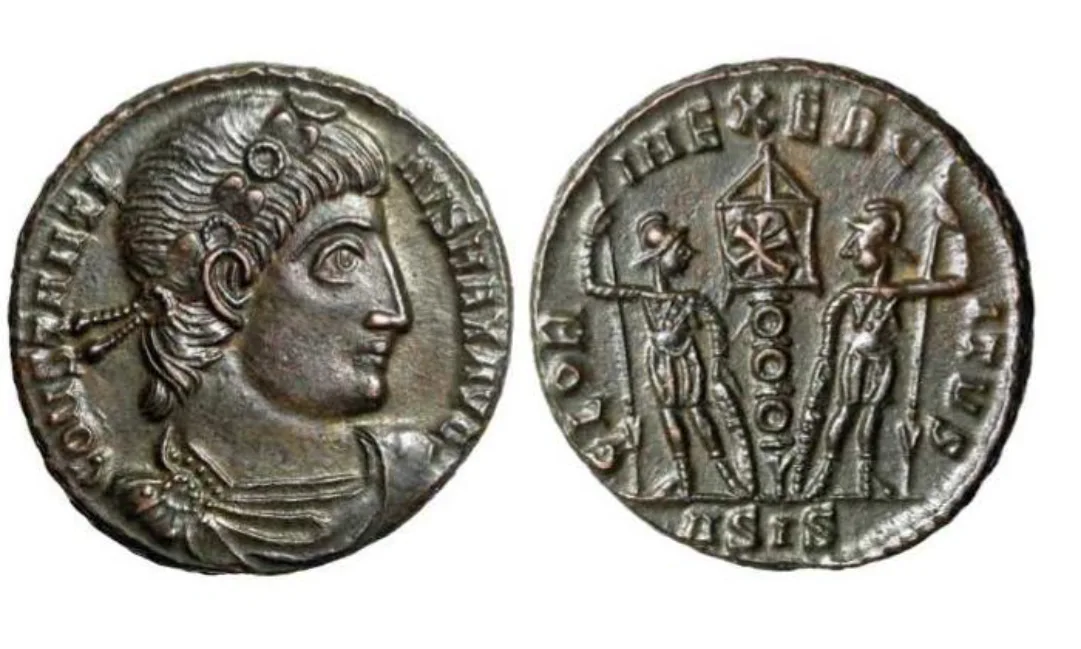The Nummus of Emperor Constantine I: Historical Significance and Iconography
By: Jaden Boyd

Emperor Constantine I, known as Constantine the Great, was a transformative figure in Roman history. His reign from 306 to 337 AD marked the establishment of Christianity as a central element of Roman society, alongside significant political reforms.
Among his various contributions, the nummus — a small bronze coin — stands out as a vital symbol of his era. These coins not only served as currency but also encapsulated the religious and political transitions of the time.
One notable nummus from Constantine’s reign features a powerful blend of imagery that reflects his commitment to Christianity and his imperial authority.
The obverse of the coin typically displays a bust of Constantine, adorned with a laurel wreath symbolizing victory and divine favor. The inscription, often reading “CONSTANTINVS AVG,” affirms his status as Augustus, the highest title of Roman leadership. This imagery positions him not just as a ruler but as a divinely sanctioned leader, embodying both strength and piety.
The reverse side of the nummus is equally significant, often depicting the Christian symbol of the chi-rho (pronounced kai-row), which consists of the first two letters of “Christ” in Greek. This symbol emphasizes Constantine’s embrace of Christianity as a source of strength and legitimacy. Such imagery represented a turning point in Roman society, as the coin itself became a medium for spreading Christian ideals among the populace.
The historical significance of the nummus extends beyond its artistic design; it reflects Constantine’s efforts to unify the empire under a singular religious and political identity. By promoting Christianity through coinage, he facilitated the integration of the faith into the cultural fabric of Roman life.
The widespread circulation of these coins also helped to establish a new economic system, where the nummus became a staple of trade and commerce, further solidifying the
transition from paganism to Christianity.
In conclusion, the nummus of Emperor Constantine I is a remarkable artifact that encapsulates a critical period in history. Its imagery reflects the intertwining of imperial authority and Christian belief, marking a transformative era for the Roman Empire. As a tangible representation of Constantine’s legacy, this coin serves as a reminder of how currency can carry profound cultural and historical significance, shaping the beliefs and practices of future generations.
Thank you, Jaden, for another fine article!